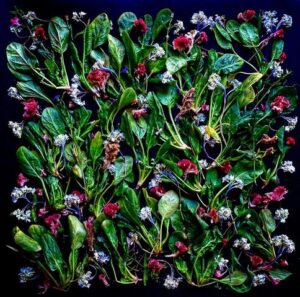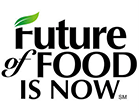
Plant-based or plant-forward eating focuses on foods primarily from plants. This includes fruits, vegetables, nuts, seeds, oils, whole grains, legumes, and beans. It doesn’t mean that you are vegetarian or vegan and never eat meat or dairy. Rather, you are proportionately choosing more of your foods from plant sources.
Leafy green vegetables are an important part of a healthy diet. They’re packed with micronutrients and flavor, and are low in calories. Most leafy green vegetables are a great source of nutrition and contain high levels of fiber, iron, magnesium, potassium, folate, and calcium, are rich in vitamins A, C, E and K.
Broccoli, bok choy, and mustard are also rich in many of the B-vitamins. They have very little sodium, cholesterol, and carbohydrates. Eating a diet rich in leafy greens can offer numerous health benefits, such as reducing your risk of obesity, heart disease, high blood pressure, and mental decline.
The best green vegetables to consume are spinach, kale, collard greens, wok chop, Swiss chard, and romaine lettuce. Use organic varieties to avoid pesticides (washing conventional produce does not rid them of pesticides, by the way.). Spinach takes the top prize as the healthiest vegetable because of its range of nutrients and benefits. It also contains antioxidants that guard against cancer, heart disease, and Type 2 diabetes.
Recent research shows that the green leaves of many plants are both affordable and abundant, making them a sustainable source of proteins and essential amino acids. Called GLPs, they include green leaves from alfalfa, amaranth, cabbage, cassava, duckweed, jackfruit, moringa, mulberry, olive, pumpkin, radish, spinach, sugar beet, and tea. GLPs have a better nutritional profile than other plant proteins because they contain a good balance of essential amino acids. The United Nations Food and Agricultural Organization (FAO) has recognized GLPs as an important source of food proteins for the future.
Moreover, the production of proteins from these leaves could help reduce greenhouse gas levels because of the ability of green leaves to sequester carbon dioxide from the atmosphere. Furthermore, the sustainability and economic viability of the food supply chain would be improved if plant leaves that are normally discarded are converted into value added food ingredients. For instance, GLPs may be utilized as functional ingredients in foods because of their nutritional, binding, emulsifying, foaming, thickening, gelling, or structuring properties. Several kinds of GLPs have been shown to exhibit antioxidant properties, consequently they may be utilized as natural preservatives in foods.
GLCs can also play a significant role in plant-based meat alternatives. They are frequently used as additives to enhance nutritional value and provide desirable functional properties. A study found that GLPs even offer a viable alternative to flour without compromising quality.
More research and development is still required before GLPs are widely used as ingredients in foods, but there is much promise for the future. Recently, researchers have been exploring alternative processing technologies to enhance the efficiency of plant protein extraction, as well as the quality of the protein ingredients obtained.
Food styling and Photo by Sarah Phillips @FutureofFoodisNow






